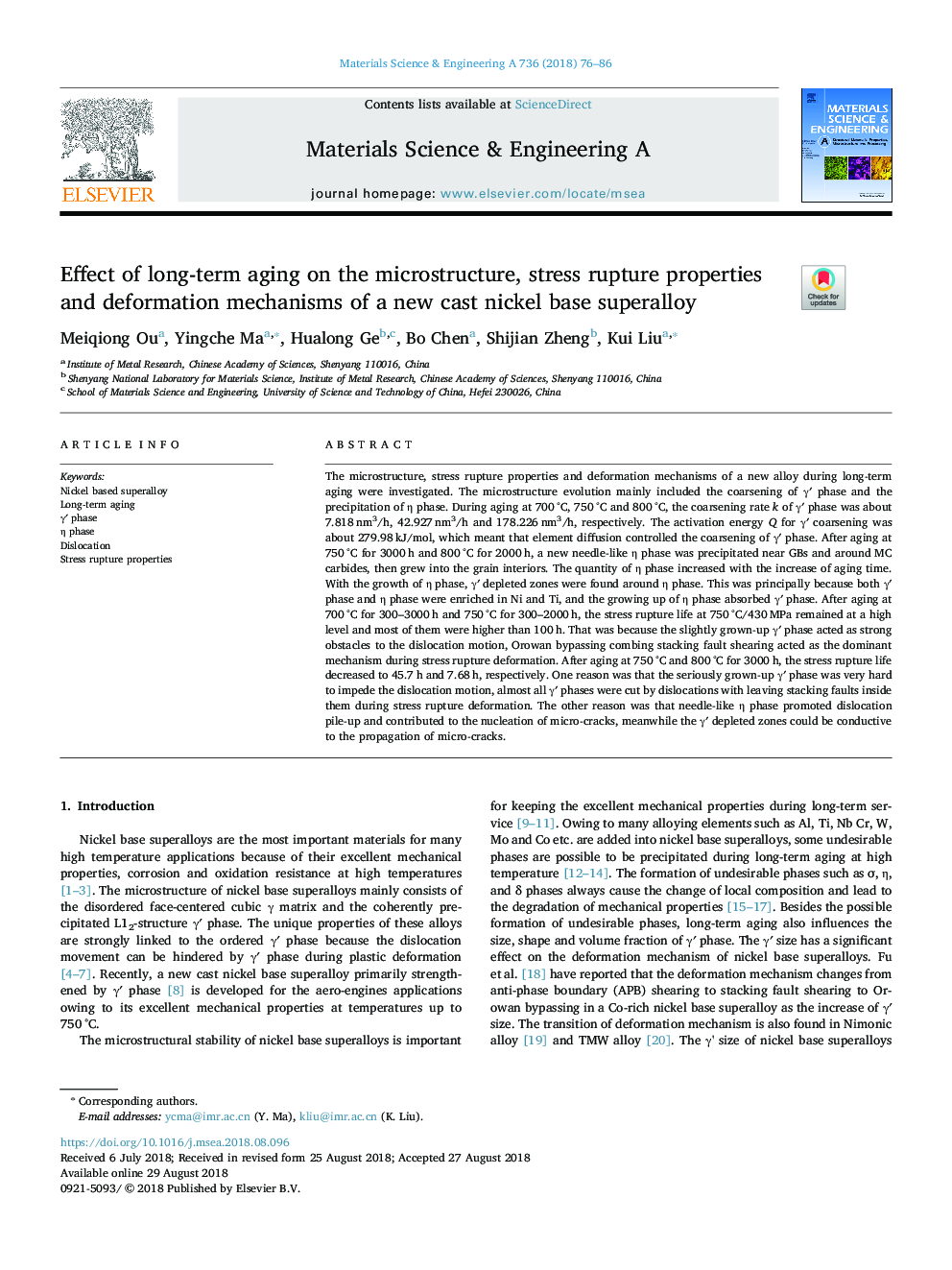| کد مقاله | کد نشریه | سال انتشار | مقاله انگلیسی | نسخه تمام متن |
|---|---|---|---|---|
| 8955433 | 1646089 | 2018 | 11 صفحه PDF | دانلود رایگان |
عنوان انگلیسی مقاله ISI
Effect of long-term aging on the microstructure, stress rupture properties and deformation mechanisms of a new cast nickel base superalloy
ترجمه فارسی عنوان
اثر پیری بلندمدت بر ریزساختار، خواص پارگی نشتی و مکانیزمهای تغییر شکل از یک سوپرلیوای نیکل ریخته گری جدید
دانلود مقاله + سفارش ترجمه
دانلود مقاله ISI انگلیسی
رایگان برای ایرانیان
کلمات کلیدی
نیکل سوپرآلیاژ بر پایه، پیری زودرس، ² ² فاز، فاز Â · فاز جابجایی، خواص پارگی استرس
موضوعات مرتبط
مهندسی و علوم پایه
مهندسی مواد
دانش مواد (عمومی)
چکیده انگلیسی
The microstructure, stress rupture properties and deformation mechanisms of a new alloy during long-term aging were investigated. The microstructure evolution mainly included the coarsening of γⲠphase and the precipitation of η phase. During aging at 700â¯Â°C, 750â¯Â°C and 800â¯Â°C, the coarsening rate k of γⲠphase was about 7.818â¯nm3/h, 42.927â¯nm3/h and 178.226â¯nm3/h, respectively. The activation energy Q for γⲠcoarsening was about 279.98â¯kJ/mol, which meant that element diffusion controlled the coarsening of γⲠphase. After aging at 750â¯Â°C for 3000â¯h and 800â¯Â°C for 2000â¯h, a new needle-like η phase was precipitated near GBs and around MC carbides, then grew into the grain interiors. The quantity of η phase increased with the increase of aging time. With the growth of η phase, γⲠdepleted zones were found around η phase. This was principally because both γⲠphase and η phase were enriched in Ni and Ti, and the growing up of η phase absorbed γⲠphase. After aging at 700â¯Â°C for 300-3000â¯h and 750â¯Â°C for 300-2000â¯h, the stress rupture life at 750â¯Â°C/430â¯MPa remained at a high level and most of them were higher than 100â¯h. That was because the slightly grown-up γⲠphase acted as strong obstacles to the dislocation motion, Orowan bypassing combing stacking fault shearing acted as the dominant mechanism during stress rupture deformation. After aging at 750â¯Â°C and 800â¯Â°C for 3000â¯h, the stress rupture life decreased to 45.7â¯h and 7.68â¯h, respectively. One reason was that the seriously grown-up γⲠphase was very hard to impede the dislocation motion, almost all γⲠphases were cut by dislocations with leaving stacking faults inside them during stress rupture deformation. The other reason was that needle-like η phase promoted dislocation pile-up and contributed to the nucleation of micro-cracks, meanwhile the γⲠdepleted zones could be conductive to the propagation of micro-cracks.
ناشر
Database: Elsevier - ScienceDirect (ساینس دایرکت)
Journal: Materials Science and Engineering: A - Volume 736, 24 October 2018, Pages 76-86
Journal: Materials Science and Engineering: A - Volume 736, 24 October 2018, Pages 76-86
نویسندگان
Meiqiong Ou, Yingche Ma, Hualong Ge, Bo Chen, Shijian Zheng, Kui Liu,
